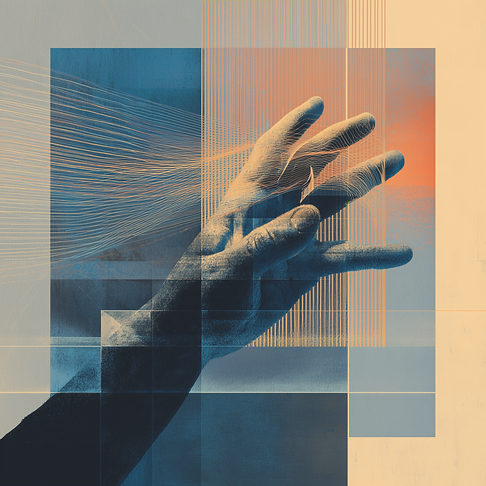AI Explorations
Where design meets automation, and ideas evolve through AI

Exploring new workflows through AI
AI is no longer just a tool — it’s part of how I think, design, and create.
In this section, I share how I’m blending design thinking with artificial intelligence: from rapid prototyping to creative automation and visual exploration. These are not polished products — they’re experiments, systems, and sketches that reflect a new kind of design process.
Combining platforms to push ideas further
Each of these pairings reflects a different angle of my exploration — mixing structure, intuition, and automation.
Lovable + ChatGPT
Working with Lovable and ChatGPT has completely reshaped the way I approach prototyping and product ideation. With natural language prompts, I can generate fully functional app prototypes — not just mockups, but real interactive systems built on clean, production-ready React components. I've created platforms ranging from nonlinear learning tools to dynamic dashboards, all without writing a single line of code. ChatGPT helps me refine the UX logic, clarify flows, and structure content, while Lovable instantly brings it to life with a professional, scalable UI.
What makes this combination powerful isn’t just the speed — it’s the clarity. These are not disposable prototypes; they’re handoff-ready foundations. Developers can jump straight into Lovable's clean component structure, customize behavior, and scale features without rebuilding from scratch. It bridges the gap between design and development, allowing me to test ideas fast while keeping everything usable, structured, and ready for implementation. It’s not just designing — it’s building with design.


AI for Humanity – “The Human Project”
“The Human Project” is an AI-assisted experiment built with Lovable, imagining a global collaboration space where people can reflect, contribute and co-create around human stories, creativity and progress.
The prototype explores:
-
How AI can facilitate reflection and creativity, not replace it
-
Structured spaces for writing, sharing and curating perspectives
-
A flexible layout that could grow into a learning and collaboration hub
This project is less about a finished product and more about designing the scaffolding for future AI-enabled communities — where humans stay at the centre and technology supports connection, meaning and action.
You can explore it here:
https://humanity-unbound.lovable.app/
Image Generation & Creative Direction with AI
Midjourney + ChatGPT
Translating abstract ideas into meaningful visuals requires more than just good prompting — it requires context, emotional intent, and the ability to iterate quickly. I use ChatGPT to shape the conceptual direction: defining the narrative, adjusting the tone, and crafting prompts that guide Midjourney with purpose. This gives me a system to explore controlled randomness — allowing me to shift between raw expression and structured composition with precision.
What I’ve discovered is a new level of visual customization. By combining prompt engineering with moodboard-based input, I can now generate images that reflect specific styles, emotional textures, and even subtle cultural cues. Instead of relying on one-off image outputs, I build a curated flow — where AI becomes a partner in refining visual identity and mood, not just generating options.


Creative Automation
n8n + Google Gemini
With n8n and ChatGPT, I’ve been able to build fully automated creative workflows — from turning spreadsheet prompts into Midjourney-ready descriptions, to generating AI voices and triggering video content publishing. It’s a modular, visual way to prototype backend logic and content flows without needing to code.
These workflows aren’t just experiments — they’re functional systems that streamline design operations. Whether I’m generating assets, collecting feedback, or managing creative pipelines, n8n acts as the connective tissue between AI tools and real output. It makes the invisible side of design visible, trackable, and repeatable.
Final Notes
This isn’t just about learning new tools — it’s about redefining how we think as designers.
Diving into AI has challenged my process, my assumptions, and even my pace. It has made me faster, yes — but also more deliberate. Tools like Lovable, Midjourney, and n8n aren’t just about automation or output. They’re about expanding the boundaries of what’s possible when machines become part of our creative dialogue.
At its core, this research is a reminder:
AI doesn’t replace intuition — it sharpens it.
The real power comes from how we choose to guide it, question it, and build with it.
This is just the beginning.



